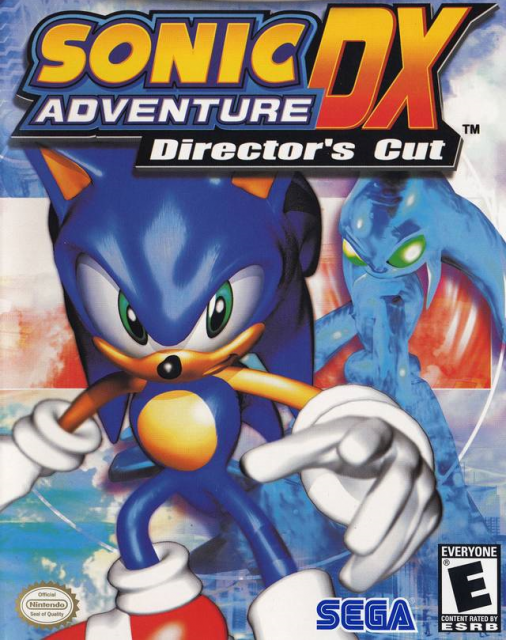The Last Great Sonic Games
It's not a great secret that the Sonic series has seen better days. Much, much better days. Though the series has reclaimed some small portion of its mojo recently with Sonic Unleashed, the fanbase remains burnt by a series of extremely bad or not so great games on the 'main' consoles. While the series continued to deliver on handhelds, its big-budget counterparts couldn't quite replicate the magic that the original games oozed.
The Sonic Adventure series was arguably the closest it ever got. These two games simultaneously showed the Sonic series at its best while sowing the seeds for the flaws that would plague it for years to come.
The original Sonic Adventure had the benefit of going first, of being forgiven for its flaws. It managed to avoid many of the pratfalls that awaited so many franchises that tried to make the jump to 3D fell prey to. This was a very fun game. There were six different styles of playing, but Sonic had the most playtime and one of the other characters played his stages (Tails) very similarly to Sonic's.
The other characters were hit and miss. Knuckles was now focused on 'treasure hunting', or rather trying to hunt pieces of the Master Emerald- returning from Sonic's 2D days. This was 3D Knuckles at his best, even if it was a departure from the style of play fans had become accustomed to back when they could plug Sonic 3 into Sonic & Knuckles.
E-102 'Gamma' was a brave attempt to try something different by allowing the player to control one of Robotnik's robots. The player still had to make it to the end of the stage, but you had a limited amount of time to get there; only getting more time by shooting enemies in quick succession. It was interesting, it was new, and the storyline for this character sets up one of the most poignant moments of the entire franchise.
It's a bit telling that the only forms of play that returned to the next installment were Sonic's, a lesser version of Knuckles', and Gamma's without the time limit. Amy makes her debut as a playable character in a mainstream Sonic game, but the mechanics behind her gameplay (hit and run tactics, stealth) aren't explored very well. And as for Big the Cat, well, no one played a Sonic game to fish...
The story of Sonic Adventure is told Rashomon-style, with the game being told from the perspective of all the playable characters. It's an interesting twist on a story that has been told lots of times before- Robotnik wants to do bad things, ancient monster is released from prison, heroes have to stop Robotnik and it. There were many different stages, and not every character got to play every stage or even the same parts of the stage.
It's here that the first signs of problems that would later have a stranglehold on the franchise would appear. From hereon out, Sonic games would focus around playing as and featuring several different characters. While the Mario series gets away with having a large cast of characters, the player is usually playing as Mario, playing a game with mechanics like a Mario game, or is playing a sports game. The characters don't get in the way, and still have some charm.
While some of the new characters introduced in the Sonic Adventure series still have some of the old-school charm, they take away from the tried-and-true gameplay of Sonic- ie, get to the end of the stage as fast as possible. This would also be the last game for a while that players would spend most of the time as Sonic, which would have mixed results in future games.
While the story in the Adventure series ranged from serviceable to quite good in Sonic Adventure 2, the focus on story would lead to some very aggravating moments later on. Again, the Mario series sidesteps this problem by essentially not having any continuity.
No conversation about a 3D Sonic game is complete without discussing the camera. While the camera would be the player's biggest foe in future installments, its interference in the early 3D games can at best be described as an annoyance. Your mileage will vary when it comes to the quality of the camera in early games.
Again though, Adventure is regarded very favorably when the nostalgia-tinted goggles are on. Despite its flaws, it was a great first attempt to step into a three-dimensional environment. Especially since so many franchises never made it past their first attempt.
Finally, I have to discuss the port. After the relatively short lifespan of the Dreamcast, the Adventure games were ported over to the GameCube. The original received a graphical update in that the character models for the main characters became smoother, shinier, and slightly less detailed. However, the NPCs often did not get any upgrade, meaning that the people of the city were still very blocky, and the model for Robotnik (referred to for the first time outside of Japan as 'Eggman') didn't age well in the slightest.
Still, credit is due where it's due. This is still a great first attempt for a Sonic game in the third dimension, and it hit more than it missed.
